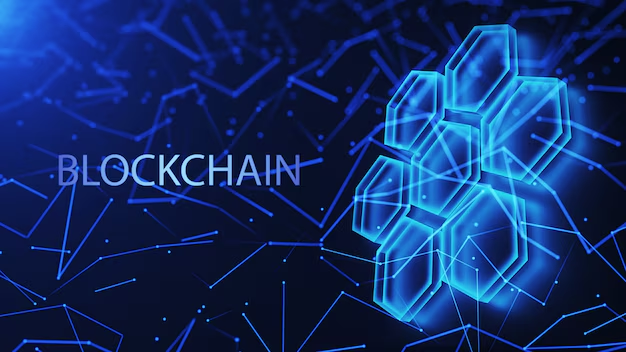- How to Create a Wallet on Blockchain
- How to Generate a New Wallet Address on Blockchain
- Where Can I Find My Wallet ID on Blockchain?
- Private Key Wallet on Blockchain
- Checking Your Wallet on Blockchain
- Why Blockchain Wallets are Essential
- Critical Role in Cryptocurrency Ecosystems
- Frequently Asked Questions (FAQs)
How to Create a Wallet on Blockchain

Step-by-Step Guide
- Choose a Blockchain Wallet Provider
- Popular options include Blockchain.com, MetaMask, and Trust Wallet.
- Ensure the provider supports the cryptocurrencies you intend to use.
- Access the Provider’s Platform
- Visit the official website or download the app from a trusted source.
- Click ‘Create a New Wallet’
- Locate the “Create New Wallet” button on the platform interface.
- Set Up Your Account
- Enter your email address and create a strong password.
- Agree to the terms and conditions.
- Secure Your Recovery Phrase
- The platform will generate a recovery phrase (12–24 words).
- Write it down and store it securely. This is crucial for recovering your wallet if you lose access.
- Verify Your Identity (if required)
- Some platforms may require ID verification for added security.
- Wallet Created
- Once set up, you will receive a wallet ID for accessing your account.
How to Generate a New Wallet Address on Blockchain
Why Generate a New Address?
Generating a new wallet address is crucial for maintaining privacy and enhancing security when using blockchain technology. Each address serves as a destination for receiving funds, and creating new ones ensures that your transaction history is not easily linked to a single address. This is particularly important for individuals or businesses dealing with multiple clients, as it isolates transactions, offering better privacy.
Moreover, regularly generating new wallet addresses reduces the risk of exposing sensitive financial details to potential bad actors. For instance, if your address is repeatedly used, it becomes easier to trace patterns or deduce account balances by monitoring the blockchain. New addresses act like fresh envelopes for every transaction, safeguarding your anonymity.
Steps to Generate a New Wallet Address
- Log into Your Blockchain Wallet
- Access your wallet account through the official website or mobile app. Use your wallet ID and password to log in securely. Enable two-factor authentication (2FA) for added protection.
- Navigate to the “Receive” or “Request” Section
- Look for a tab or button labeled “Receive” or “Request” on your wallet’s interface. This section manages incoming transactions and displays your wallet address options.
- Click “Generate New Address”
- Within the “Receive” section, find the option to generate a new address. This may be a button explicitly labeled “Generate New Address” or integrated into the receiving address settings.
- New Public Address Appears
- Once generated, the system provides a unique alphanumeric string—your new wallet address. This address can be shared with others for transactions. Many wallets also offer a scannable QR code alongside the address for convenience.
- Copy and Share the Address Safely
- Use the copy function to avoid errors when sharing the address. Double-check the string before sending it to ensure no digits are missing or altered.
- Verify Usage of the New Address
- Before using the address for significant transactions, test it with a small amount to confirm functionality. This step is optional but provides peace of mind.
Where Can I Find My Wallet ID on Blockchain?
What is a Wallet ID?

A wallet ID is a unique identifier assigned to your blockchain wallet account. Unlike wallet addresses, which are used for transactions, the wallet ID is required for logging into your account. Think of it as your account number—it helps identify your account on the wallet provider’s system but does not allow anyone to view your funds or transaction history.
Steps to Find Your Wallet ID
- Log into Your Wallet Account
- Open your blockchain wallet on a trusted device. Use your registered email and password or wallet ID to access your account. Ensure you’re on the official platform to avoid phishing scams.
- Go to the “Settings” or “Profile” Section
- Once logged in, locate the “Settings” or “Profile” tab on the dashboard. This section contains account-related information, including your wallet ID.
- Locate Your Wallet ID
- Under the account details, look for a field labeled “Wallet ID” or “Account ID.” This is your unique identifier for accessing the wallet. It usually appears as a long alphanumeric string.
- Securely Store Your Wallet ID
- Copy the wallet ID and save it in a secure location, such as an encrypted file or a physical backup like a notebook. Avoid sharing it with others or storing it in easily accessible digital spaces.
- Understand the Wallet ID’s Role
- Your wallet ID is only for account access. It cannot be used to send or receive funds, nor can it provide direct access to your private key or wallet contents.
Tips for Handling Wallet IDs
- Avoid Sharing Publicly: Even though the wallet ID does not grant access to your funds, sharing it publicly could lead to phishing attempts.
- Use Secure Networks: Always access your wallet on secure, private networks to prevent interception.
- Backup Regularly: Create multiple backups of your wallet ID and store them in safe locations. If lost, recovering your account without the ID could be challenging.
By understanding and securely managing wallet IDs and addresses, blockchain users can maintain privacy, security, and seamless control over their digital assets.
Private Key Wallet on Blockchain

What is a Private Key?
A private key is the cornerstone of blockchain wallet security. It is a unique alphanumeric code generated during wallet creation, functioning as a digital signature to authorize transactions. Think of the private key as the master key to your wallet. Without it, you cannot access your funds, and with it, someone else could gain full control over your assets.
Private keys are mathematically linked to public wallet addresses, allowing transactions to be securely signed without revealing the key itself. This asymmetric cryptography ensures that blockchain transactions remain secure and verifiable.
Importance of Confidentiality:
The private key must remain confidential at all times. Sharing it or storing it in unsecured locations can result in unauthorized access, leading to irreversible loss of funds. Unlike traditional banking, blockchain systems rely solely on this key for access—there’s no “forgot your password” option if it’s lost.
How to Secure Your Private Key
- Store Offline:
- Use hardware wallets (e.g., Ledger, Trezor) to keep your private key offline. These devices are immune to online hacking attempts, providing an extra layer of security.
- Alternatively, write down the key on paper (cold storage) and store it in a safe location like a vault or a secure cabinet.
- Avoid Sharing Online:
- Never share your private key through email, messaging apps, or cloud storage. Cybercriminals often target such platforms to access sensitive information.
- Use Encrypted Storage:
- If you must store your private key digitally, ensure it is encrypted using robust encryption software. This adds a layer of protection in case the storage medium is compromised.
- Back Up Your Key:
- Create multiple backups of your private key and store them in different secure locations. This minimizes the risk of total loss due to physical damage or theft.
- Enable Multi-Signature Security:
- Some wallets allow multi-signature setups, requiring multiple private keys to authorize transactions. This reduces the risk of a single point of failure.
- Regularly Update Security Practices:
- Stay updated on best practices for safeguarding private keys. As cyber threats evolve, so should your security measures.
Checking Your Wallet on Blockchain
How to Check Your Wallet Balance
Regularly checking your wallet balance is essential to track your funds and ensure all transactions are authorized.
Steps to Check Your Balance:
- Log into Your Wallet:
- Access your wallet using the official app or website. Authenticate using your wallet ID and password, or the private key in non-custodial wallets.
- For wallets with 2FA (Two-Factor Authentication), verify the login through your secondary device or app.
- Navigate to the Dashboard:
- The wallet’s interface will have a “Dashboard” or “Wallet” section displaying your holdings.
- Here, you can view balances for all supported cryptocurrencies and tokens.
- Check Transaction History:
- Review the history of incoming and outgoing transactions for accuracy.
Transaction Verification
Using a blockchain explorer ensures that all transactions linked to your wallet address are transparent and traceable.
Steps for Transaction Verification:
- Copy Your Public Wallet Address:
- Find your public wallet address in the “Receive” section of your wallet.
- Open a Blockchain Explorer:
- Visit a reliable explorer (e.g., Blockchain.com, Etherscan for Ethereum, or Blockchair).
- Paste the Address:
- Enter your wallet address in the search bar.
- View Transaction Details:
- Review all incoming and outgoing transactions, including timestamps, amounts, and current status (e.g., confirmed or pending).
- Use this data to verify payments received or troubleshoot transaction issues.
Why Blockchain Wallets are Essential
Blockchain wallets are not just tools for storing cryptocurrencies—they are gateways to the decentralized economy. These wallets empower users by giving them full control over their digital assets without reliance on intermediaries like banks or payment processors.
Benefits of Blockchain Wallets

- Enhanced Security:
- With private keys and encryption, wallets ensure that funds remain secure and inaccessible to unauthorized parties.
- Decentralization:
- Unlike traditional financial systems, blockchain wallets operate independently of central authorities, enabling peer-to-peer transactions.
- Transparency:
- Wallets allow users to track their transactions on public ledgers, fostering trust and accountability.
- Global Accessibility:
- Blockchain wallets enable transactions across borders without the need for currency conversion or traditional banking processes.
- Versatility:
- They support multiple cryptocurrencies, tokens, and even NFT storage, making them essential for engaging with blockchain ecosystems.
- Control and Ownership:
- With blockchain wallets, users are the sole custodians of their funds, eliminating the risks of frozen accounts or third-party mismanagement.
Critical Role in Cryptocurrency Ecosystems
Blockchain wallets are indispensable for interacting with decentralized finance (DeFi), participating in token sales, managing non-fungible tokens (NFTs), and trading on decentralized exchanges (DEXs). Whether you’re a beginner exploring cryptocurrency or an advanced trader, understanding wallet functionality and security is key to successful blockchain engagement.
By mastering wallet management, users can confidently navigate the dynamic world of blockchain while safeguarding their digital assets against potential threats.
Frequently Asked Questions (FAQs)
What is a private key, and why is it important for blockchain wallets?
A private key is a unique alphanumeric code that grants full access to your blockchain wallet. It’s essential for authorizing transactions and managing funds. Without the private key, you cannot access your assets, and if it falls into the wrong hands, someone else can control your wallet.

